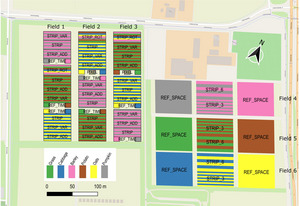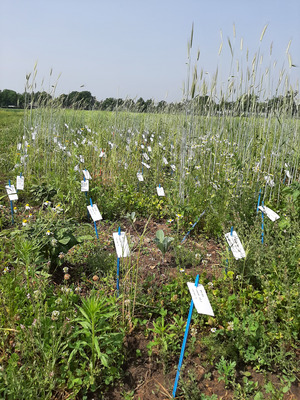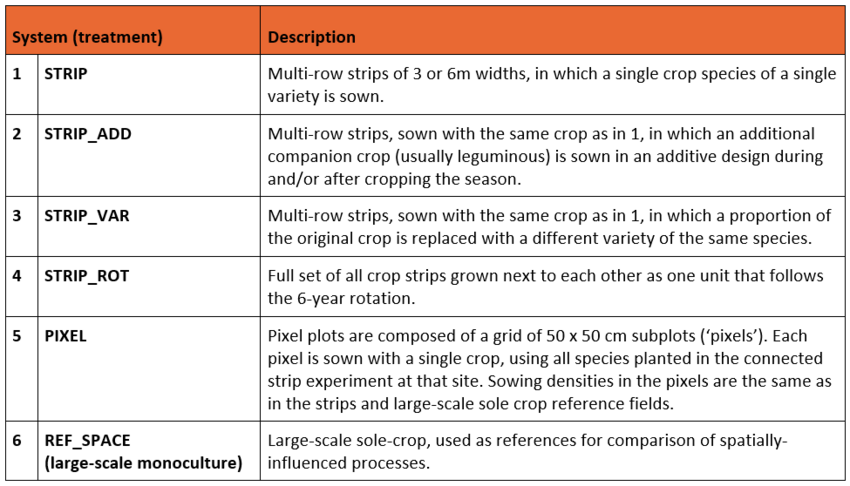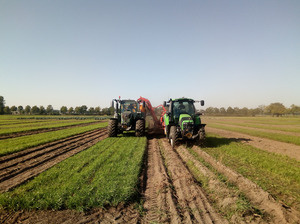Investigating crop diversity for agroecosystem services: the impact of strip cropping in Dutch organic arable systems
Field experiment 7, the Netherlands
Trial location and duration
Location: Wageningen University Droevendaal Organic Experimental and Training Farm, Wageningen, NL (51°59'30" N 5°39'50"E)
Trial duration: 2018-ongoing
Objectives and research question
The main objective of field experiment 7 is to examine the effects of and interactions between three dimensions of field-level crop diversification (temporal, spatial, and genetic) on the delivery of agroecosystem services in Dutch arable systems. Our focus is on strip cropping: the practice of growing two or more species in alternate, multi-row strips wide enough to allow independent cultivation but narrow enough to support ecological interaction. We hypothesize that re-introducing diversity within the field via strip cropping can help to support and regulate agroecosystem services without reducing yields. We test this by monitoring yield; crop quality; pest, disease and weed control; associated biodiversity; and soil parameters.
Experimental design
The experiment consists of three replicates of 63 x 54 m strip blocks for each of three crop pairs, and since 2021 one large-scale reference monoculture for each crop of 66 x 72m (Figure 1). The experiment is laid out in an incomplete block design between fields. In fields 1-3, treatments follow a randomized complete block design. Strip dimensions are 3 m x 54 m. The six-year rotation is based on the dominant crops produced by organic growers in the Netherlands and local constraints: cabbage—barley—potato—oat—pumpkin—grass. Crops are planted either as pairs in adjacent strips or alternating next to each other. Within the pairs three treatments are tested (Table 1). As a futuristic option, “pixel cropping” is also tested (see Table 1). All crops in the experiment are managed according to Dutch organic standards.
Main findings and highlights
- Yield variation between years is reduced by distribution of strips across more fields.
- Yields were similar in all stripcropping treatments and the same or slightly lower in comparison to the references
- Potatoes in stripcropping treatments had lower severity of potato late blight and fewer Colorado beetles than the references
- Increasing the number of crops in the same plot (STRIP_ROT and PIXEL) resulted in a higher number of different insect species present.
- The natural parasitism rate is higher in all stripcropping treatments than the references.
Main challenges
- Strip design limits options for effective tillage causing excessive use of a cultivator.
- Irrigating separate crops in strips reduces efficiency
- Plant-based fertilization was more complicated and expensive to arrange.
- Weather extremes call for new adaptive crops but this is constrained by market and trial relevance for farmers




 tippen und dann zum Befehl zum Home-Bildschirm hinzufügen nach unten scrollen.
tippen und dann zum Befehl zum Home-Bildschirm hinzufügen nach unten scrollen.